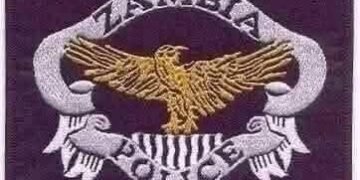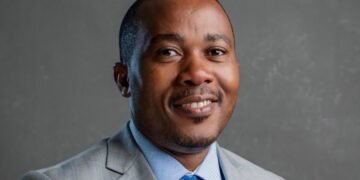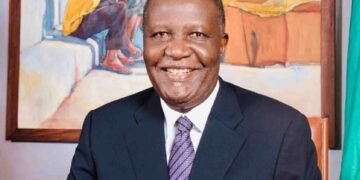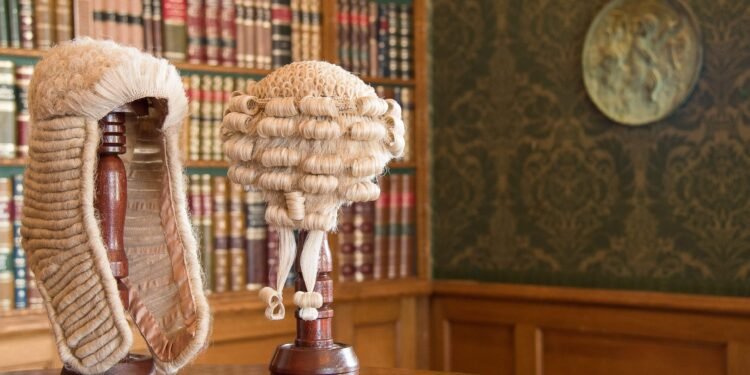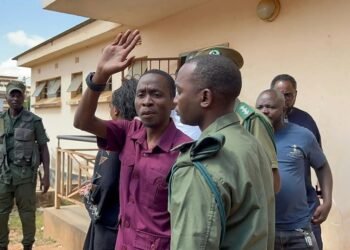On lawyers who train other lawyers to be better advocates in court.
By Professor Munyonzwe Hamalengwa
The day a student graduates from Law School (with equal application to graduating from Medical School, Engineering, Pharmacy, Nursing, Police College, Army Training, Accountancy, Business Administration, Economics, Education, Social Sciences etc) is one of the happiest days in the graduate’s life.
The graduate has reached one of the summits of their lives. Hardly has the graduate enjoyed the view from this mountain top is he or she reminded of Nelson Mandela’s last paragraph in his book, “Long Walk to Freedom”. Mandela writes: “I have walked that long road to freedom. I have tried not to falter: I have made missteps along the way. But I have discovered the secret that after climbing a great hill, one only finds that there many more hills to climb. I have taken a moment here to rest, to steal a view of the glorious vista that surrounds me, to look back on the distance I have come. But I can rest only for a moment, for with freedom come responsibilities, and I dare not linger, for my long walk is not yet ended”.
The Law graduate (with relevant or equal application in modified form to other professions) realizes now that there is a higher and more ominous looking steeper summit that has to further be climbed: the Bar admissions mountain. The day the graduate is called to the Bar is one of the most unforgettable days of their lives. Even if they forget momentarily, there will always be photos in their homes or offices or social media to remind them of that day. This is truly a great day.
From that summit they will notice a valley below from which they will now begin to practice law. They will have to climb from the valley to learn how to climb the steep mountain of the practice of law, from junior league to major league players. What was learnt in law school and the bar admission course pales in significance to what the graduate now realizes they do not know because the actual practice and the psychology of practice is never taught in law school or bar admissions phase. It is even never written about.
The graduate fleetingly met the beast of the practice of law through the Mooting competitions but that was a miniscule dress rehearsal. It is nothing compared to the actual big stage when one is alone at counsel table with a client in the dock or sitting behind them in the body of the court. On the other side is opposing counsel or the prosecutor and in front is the magistrate or judge who has no clue of what the new counsel is made of. The mountain is high and steep. The knees are knocking and begging to sit down. The stomach is churning uncontrollably. The mouth is dry. The lungs begin to release increasingly less and less air than before. One can’t breathe properly at this stage. This moment and many future moments were never taught in law school or Bar Admissions training.
Mandela’s quotation comes in hand. You needed not to linger too long at the previous summits. You had more work to do in order to climb further summits
after climbing down through the valleys.
In some jurisdictions the graduate’s work to climb further summits is made easier by veteran lawyers or judges who have taken the time to write books or training manuals to make others, especially new lawyers to become better and effective advocates.
It is the aim of this article today to feature one such advocate in a different jurisdiction who devoted his practice and life to writing books to make others better advocates. There are perhaps equivalent advocates in many jurisdictions. Or there ought to be. In future I will write about a judge or judges who write to train lawyers or judges to be better effective professionals.
For today’s article, I refer you to the esteemed King’s Counsel (KC) of Canada. I introduce you to KC Robert B. White. The reason I have chosen KC White is that he had wide experience in several Canadian jurisdictions and different organizational bar associations and secondly his writings in aid of counsel work encompasses both trial and appeal court work and further he has written on two complicated areas of practice as I will indicate below. KC White was a member of the Law Society of Alberta, the Law Society of Saskatchewan and the Law Society of the Northwest Territories. He was active in the Canadian Bar Association and the Edmonton Bar Association. He also lectured at the University of Alberta Law School for 18 years. It can be seen that KC White had broad experience in the practice and teaching of law. It was thus fitting that he would devote a great deal of time giving back to the legal profession.
Computers were not in common use in the 1980s when KC wrote his first book entitled “A Lawyers Guide to the Computer”(1986). That book became a popular hit in Canada. I believe it was the first book on the utility of computers for lawyers.. In the 1980s this book was a must have and read book for lawyers. Lawyers used to use typewriters and those lawyers used to have to travel to a local library to do physical research. Lawyers in those days used to have impressive libraries as well.
Those who had computers couldn’t do research on computers because computers were not yet fully programmed to do searches as they are now in 2025. The internet was not yet invented. Now came the book on Lawyers and Computers in 1986. Lawyers both new and old had to climb the humongous Computer mountain to provide better services to their clients. Nelson Mandela was still imprisoned on Robben Island without knowing he would stay there another 14 years and his last paragraph quoted above was still not yet conceived.
As of the present, lawyers are still climbing and dreading to climb the Computer mountains lying in front of them. Hardly has one mastered one computer application does one more or another or several need to be mastered and conquered.
After the Computer book, KC White introduced another mountain for lawyers to climb. He wrote “The Art of Discovery”(1990). This is a subject that is not taught in law school or Bar Admissions phase. It is a mountain to master on its own especially for civil practice. In medical malpractice cases, in personal injury cases, and many other areas of civil practice, the discovery process can determine how far the case will go, whether it will settle or go to trial and the likely outcome of the case. Masterly of the discovery process is a must. Since this subject is not taught as indicated, one first meets it in actual practice.
Thus a lawyer has to climb the discovery mountain under new circumstances. This book has 16 chapters dealing with all types of discovery issues. It has 7 Appendices as samples of the discovery process.
The preface describes this book as the book of Advocacy. “Advocacy consists of all aspects of the effective preparation and presentation of a legal issue”. This book is like a manual. You will keep going back to it in practice.
In 1993 KC White produced the book “The Art of Trial”. KC White states that there are many books on the art of trial but still needed to write another one to emphasize that trials are “hard work” and the more you know about this art the better advocate you become.
New lawyers will find the mountain of a trial a formidable mountain to climb. Each case presents new sets of previously not experienced dynamics. New Covent, new issues and new players on the other side. It is like you are being born kind of experience in every case. New mountains to climb present themselves. The book has 22 Chapters.
At some point every lawyer who tries appeal or prosecutes appeal cases, will use expert witnesses or confront expert witnesses from the opposing counsel. Calling expert witnesses was first encountered in a highly theoretical manner in law school in the Law of Evidence.
In practice using an expert witness calls for serious climbing of the Expert mountain. Difficult issues include why you need an expert witness at all. Where do one get the expert witness? How do you present and qualify the expert and how to navigate the dicey issue of asking the hypothetical question that supports your theory of the case without asking your expert directly whether your client is innocent or not liable.
KC White teaches you everything you need to know about climbing the Expert Mountain through his book. “The Art of Using Expert Evidence”(1997). The book has 8 chapters. “For many trial lawyers, dealing with expert evidence is like being in the dark. The subject matter may be unfamiliar and complex. The law governing it is far from clear or consistent, and even if we know the subject matter and understand the law, few of us have a systematic way of organizing our presentation of, or challenge to, expert evidence” states KC White impelling him to write the book.
I was out of the Bar Admissions exercise when I was presented with an opportunity to defend a person who had killed two people in a courtroom. The case required calling several expert witnesses in different discrete areas for both sides. I had to find an expert on what provocation means in a certain religious culture and the consequences of certain provocative gestures.
The western legal culture had never heard that a simple gesture in some culture is so provocative that death could ensue on the spot. I had never heard of it too but I came across it during that case. I had to read widely on this area and practice it in a real case in court, call it learning on the job backed by a lot of reading. Practicing high stakes law involves climbing one mountain after another with valleys in between some of the valleys more treacherous than the steep mountains ahead.
An expert who you thought would really help your case, withers on cross-examination. A witness can kill your case that you had prepared so hard for.
In this double murder case, I experienced my first jury selection exercise. You never learnt this process anywhere except through observing other lawyers do it. It is different when it is your turn to do it for the first time. What is a peremptory challenge? What is challenge for cause? How do you prepare for a jury address? You have to climb the jury selection and address mountain on the job. Fortunately there are tons of books on the subject. Does law accept and reward lazy lawyers? There is so much work to do if you want to join the big leagues and there are there in every jurisdiction.
A lot of lawyers never argue appeal cases. But those who do have a ready-made book by KC that would help them climb the Appeal Mountain. Appeals like trials are mountains on their own. Appeals require special skills. Not every lawyer is equipped to be a trial lawyer or appeal lawyer let alone be great at both.
KC White’s Appeal Book is entitled simply “The Appeal Book”(1999). The book “includes well-known issues in appellate advocacy , but uniquely in that they combine the points of view of the bar and bench, and clearly in a way that both the beginner and the practiced lawyer can benefit from them” writes KC White along this time with Justice of the Appeal Court, Honorable Joseph J. Stratton, also a KC.
The book has 8 chapters. Many clients think if they lose at trial, the next logical step is an appeal. This book cautions one about the dangers of being an appeal trigger happy. Not every case should be appealed. Lawyers should resist the temptation to encourage losing appeals but once the decision has been made to appeal, this book is an arsenal of weapons for the task.
We honor lawyers and judges who give back to the community in terms of their writings to enable others in the legal profession to be better advocates for their clients or for society. Better advocates improve the quotient of justice in society. Better advocates have to be prepared to continue climbing mountains and down the valleys and up the mountain again.
Legal practice is continuous legal education. It is not for the faint at heart. As the saying goes, “The defence never rests” which has now expanded to, “The Prosecution never rests”. Both have mountains to climb. No lawyer is to be left behind.
Professor Munyonzwe Hamalengwa teaches Criminal Law, Law of Evidence and Clinical Legal Education.

